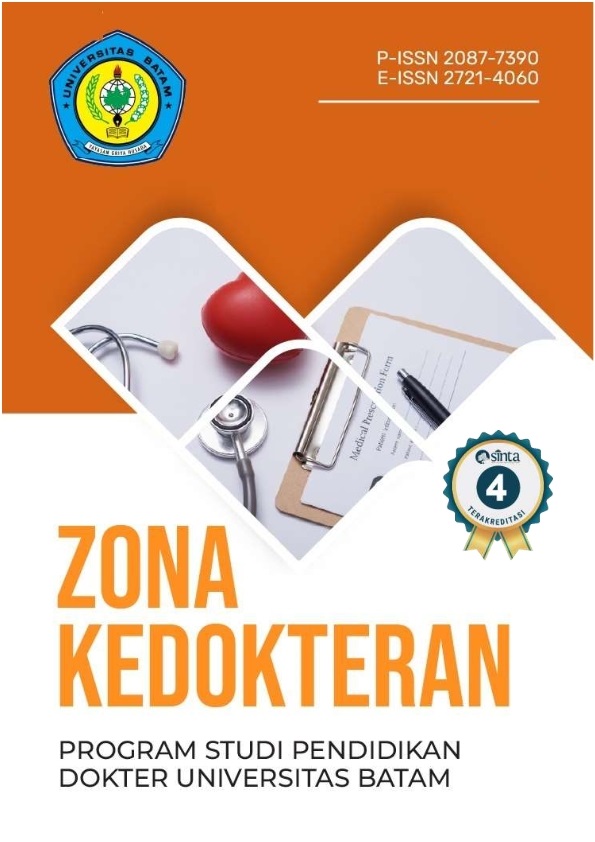HUBUNGAN USIA, INDEKS MASSA TUBUH (IMT), DAN PEKERJAAN TERHADAP KEJADIAN HERNIA INGUINALIS DI RUMAH SAKIT BUDI KEMULIAAN KOTA BATAM
DOI:
https://doi.org/10.37776/zked.v15i3.1947Abstract
ABSTRACT Background: Inguinal hernia is the most common type of hernia and is frequently encountered in the surgical department, particularly among males. Major risk factors suspected to contribute to inguinal hernia include age, body mass index (BMI), and types of occupation that increase intra-abdominal pressure. This study aims to determine the relationship between age, BMI, and occupation with the incidence of inguinal hernia at Budi Kemuliaan Hospital, Batam City. Methods: This research used a retrospective Case-Control study design based on medical records from 2022 to 2024. The sample consisted of 162 patients, comprising 81 patients with inguinal hernia (case group) and 81 patients with other types of hernia (control group). Data were analyzed using the Chi-Square test and Odds Ratio (OR) calculation. Results: The results showed a significant relationship between age (p=0.000) and occupation (p=0.000) with the incidence of inguinal hernia. However, there was no significant relationship between BMI and the incidence of inguinal hernia (p=0.432). Conclusion: Age and occupation are significantly associated with the incidence of inguinal hernia, while body mass index does not show a meaningful relationship. Keywords: Inguinal Hernia, Age, Body Mass Index, OccupationDownloads
Published
Issue
Section
License
Copyright (c) 2025 Muhammad Rifki, Kasih Purwati, Anggita Fitria Hartanti

This work is licensed under a Creative Commons Attribution-NonCommercial-ShareAlike 4.0 International License.






